
A vehicle's alternator, powered by the vehicle's engine, continually charges the battery while the engine is running.
If the vehicle's battery goes dead, it will need to be recharged or boosted to get the car started. Once the engine's started, the alternator will take over and charge the battery. It takes between 30 minutes and an hour of driving to charge a car's battery.
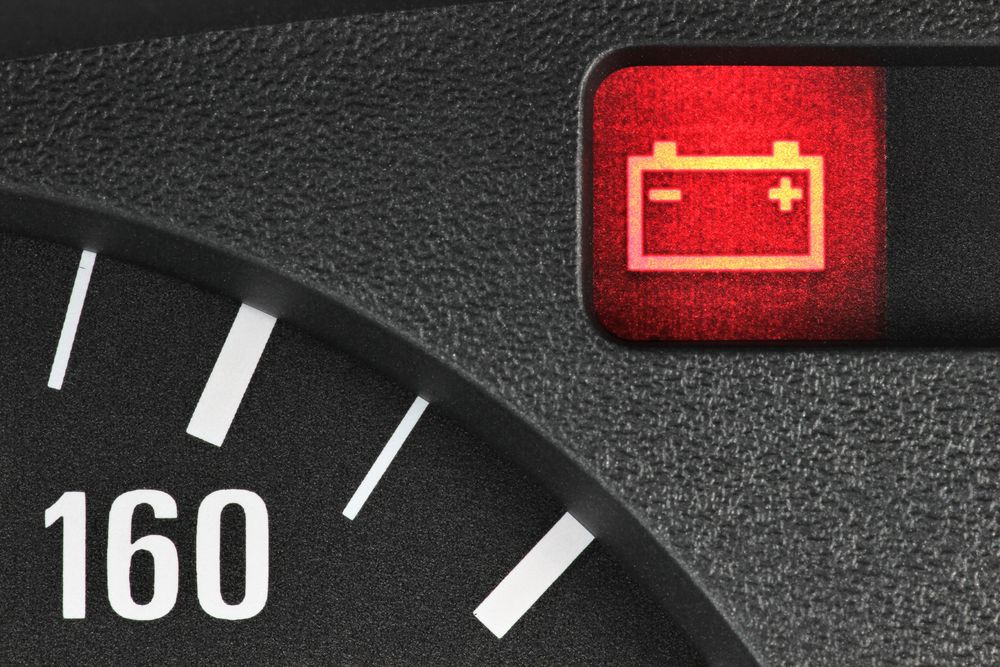 Car battery warning light
Car battery warning light
How Long Does It Take An Alternator To Charge A Battery While Driving?
The rate at which your alternator charges your battery is primarily determined by your engine's RPM.
Higher revolutions per minute will spin the rotor in the alternator faster.
This, in turn, results in the alternator generating a higher voltage.
However, your alternator will max out at a certain RPM.
So it will take longer to charge your battery at lower RPMs.
Highway speeds keep your engine at a decent RPM for battery charging.
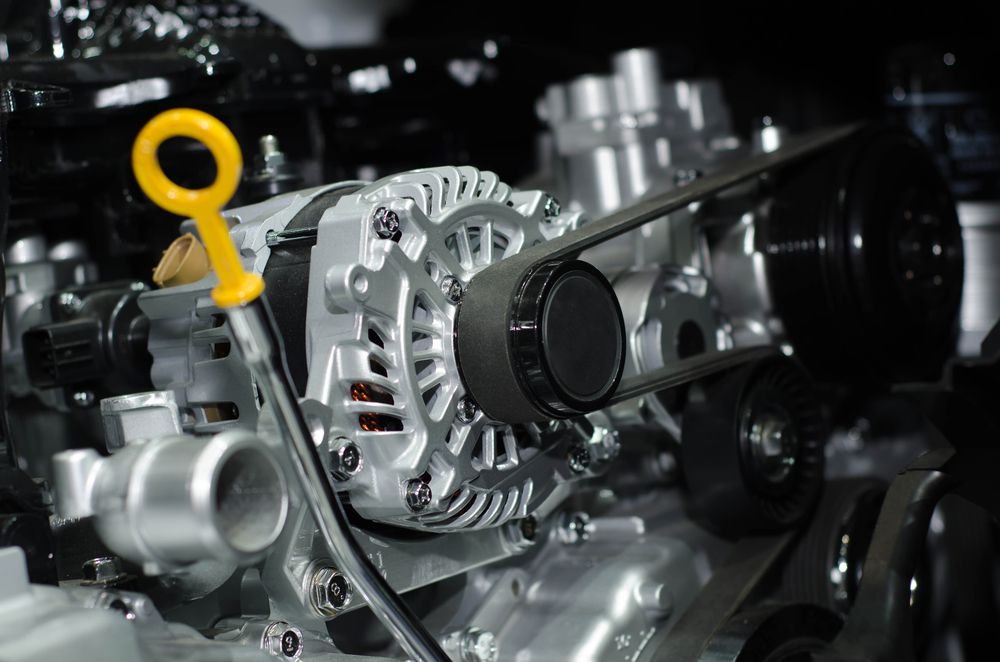 Alternator driven by belt
Alternator driven by belt
At roughly 55 mph, the alternator will fully charge your battery after half an hour to a full hour.
It will be on the longer end of that estimate if your battery is extremely depleted at highway speeds.
Your electrical components will also slow the charging process as they increase the draw on the alternator.
You can shut off any unnecessary electrical components to improve this time estimate.
Some accessories you can shut down to reduce power draw include:
- Windshield wipers
- Defroster
- Heated seats
- Radio
- Other dashboard electronics
How Long Does It Take To Charge A Car Battery After A Jump?
A "jump," also known as "jumping a battery," is when you charge a car with a dead battery with another vehicle just enough to get the dead car started.
It also depends on whether you want enough charge to start the car next time or a fully charged battery.
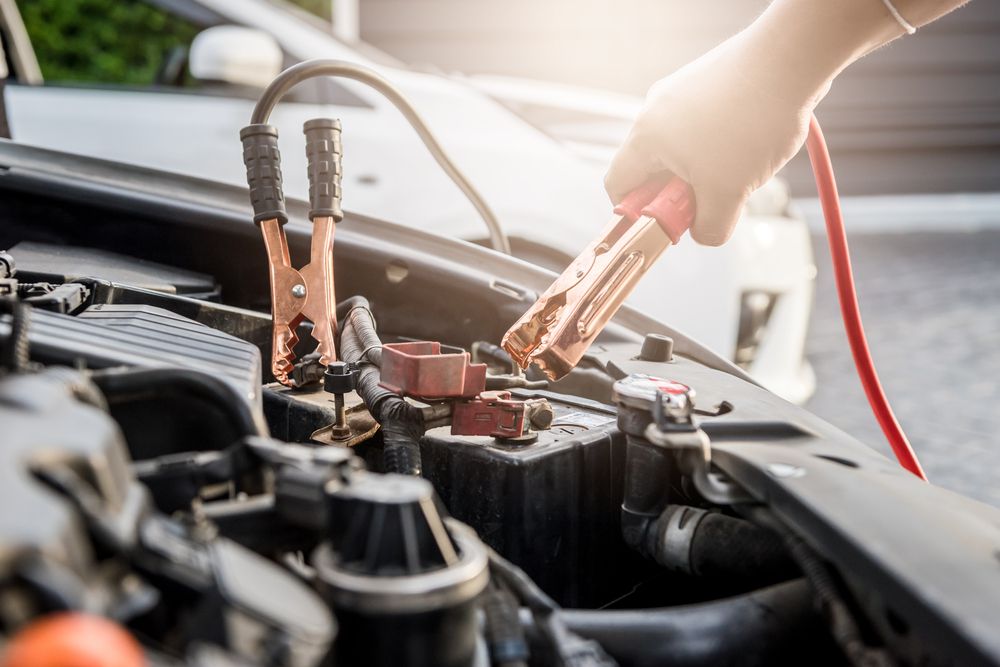 Jumping a battery
Jumping a battery
In most cases, severe problems aside, you will be fine if you drive your car for a half-hour after a jump.
A half-hour of driving will give your alternator enough time to charge your battery. After that, the charge won't be full, but you'll be able to start your car the next time you get in.
But if you want to charge your battery fully, you'll need to drive longer. An hour to an hour and a half will do well.
As above, highway speeds are best when recharging your battery.
How Long Should I Leave My Car Running After A Dead Battery?
Unfortunately, an entirely dead battery will take some time to jump and recharge.
Once you've jumped your dead battery, you should leave your car running for at least a half-hour.
If you leave your car idling, it will charge slowly. Half an hour will provide enough charge to start the car the next time.
The bare minimum amount of time is 15 minutes though that might not be enough in all situations.
However, it is better to leave it running longer or take it for a quick drive.
A half-hour at highway speeds will be better for your battery than idling for the same amount of time.
 Dead battery in cold weather
Dead battery in cold weather
How Long To Run Car To Charge Battery In Cold Weather?
Cold weather can reduce your car battery's output by 50-60% at 0°F.
This makes charging time very important.
The length of time you should run your car depends on how cold it is.
Driving your car at highway speeds for 15 minutes will provide a decent charge.
If the battery is completely dead, you should drive at highway speeds for at least a half-hour once you've jumped it.
A short drive through a neighborhood involves a lot of stops and starts that won't give your alternator much time to recharge the battery.
How To Charge Car Battery While Parked?
If you don't have the time to drive around or don't want to, there are a few ways to charge the battery while parked.
- Let the car run
- Use a trickle charger
The first method doesn't require anything extra. Letting your car idle will charge the battery.
Let your car run for at least a half-hour. Of course, you should let it run for longer if the battery is very "dead."
If you don't want to leave your vehicle running, you can use a trickle charger.
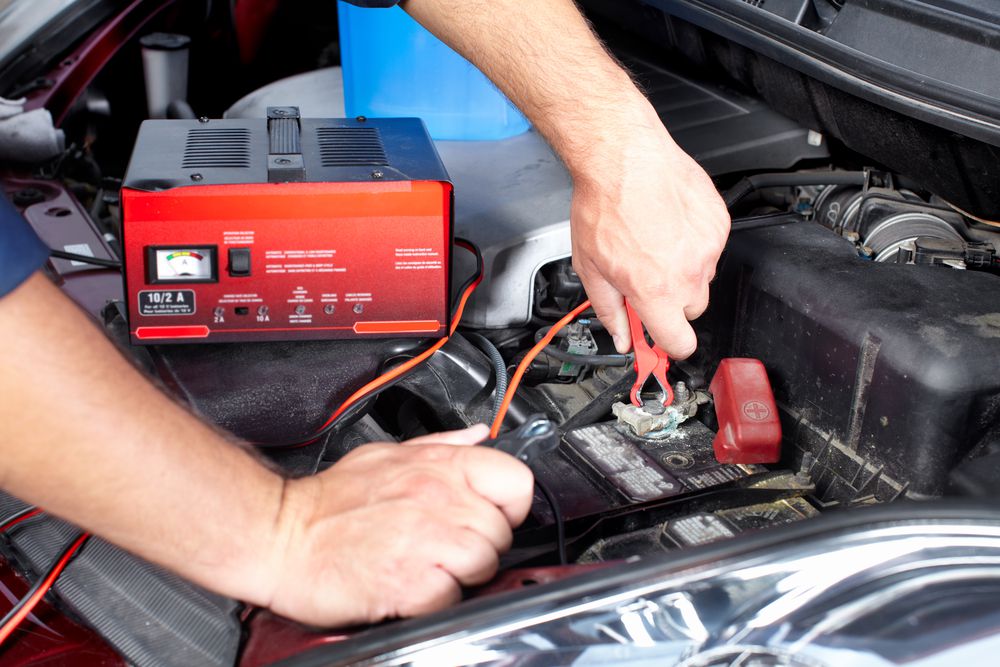 Trickle charger
Trickle charger
A trickle charger is any battery charger that outputs very low amps.
This makes trickle chargers ideal for charging your car battery overnight.
When leaving the charger connected overnight, use a "smart" charger.
These chargers can detect the battery level and turn off when fully charged.
Be sure to consider battery charge before you have to travel.
Does The Alternator Charge The Battery When The Car Is Idling?
Since the alternator's output is affected by the engine's RPM, it raises the question of whether idling is enough to provide charge.
The quick answer is that your alternator will charge the battery while idling.
Due to the mechanics of the belt connecting the engine and alternator, the alternator spins faster than the engine.
The ratio is roughly 1:3 engine to alternator.
That is as long as everything is working correctly and you don't put a significant load on the alternator.
Whether the alternator is fully functioning will be discussed later. The load, however, is determined by the electrical accessories.
Since the car is idling, you can turn off the headlights in addition to all of the extra components.
You ensure that the alternator focuses on charging the battery by reducing the load.
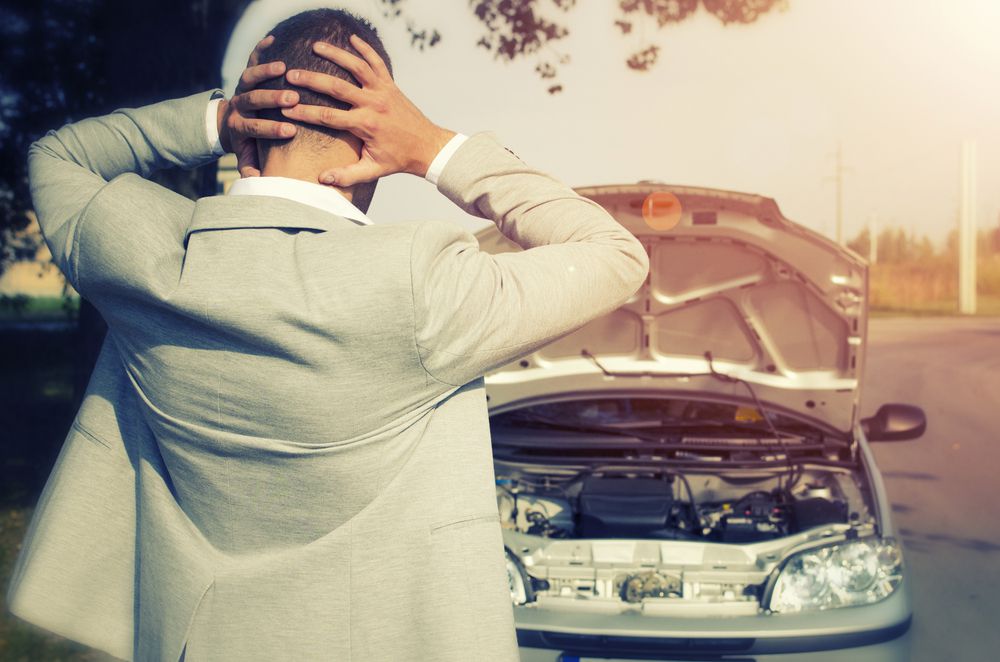 Stranded with dead battery
Stranded with dead battery
Does Revving The Engine Charge The Battery?
If alternator output is tied to engine RPMs, the logical conclusion is that higher RPMs charge the battery faster.
You would be correct to assume this. Revving the engine will increase the rotor's speed in the alternator turns and create more current.
Just be sure not to rev the engine too much. With the 1:3 ratio, you only need to rev your engine up to 1,500 or 2,000 RPMs to reach the max output.
Risk To Battery Charging By Driving
Your car battery was built within safety standards, but it can become worn down as things age.
Charging your battery by driving can come with some minor risks. This is especially true after frequent jumps.
Here are some of the common risks.
Recalibrating
Your alternator and battery provide electricity to countless computers in addition to the more visible components.
These computers and their sensors risk shutting down when the battery is very low.
Even when the battery is back to full charge, these computers may need recalibration.
Recalibration is best done by the dealership or a mechanic.
If you have a scan tool, you may be able to recalibrate on your own.
Alternator workload
Next is the workload you put on your alternator.
Your alternator needs to provide electricity for all of the core electrical components and any accessories you have turned on.
When you add recharging a dead battery to those responsibilities, it strains your alternator.
The alternator is typically meant to charge the battery in small amounts.
Doing this often will reduce the lifespan of your alternator.
Drive belt
Related to the workload issue is the drive belt.
This is the belt that provides power for a variety of systems in your engine, including the alternator.
Putting extra workload on the alternator can, in turn, put extra workload on the belt.
This can cause the belt to break if it reaches the end of its lifespan.
If you are driving around trying to charge your battery, this can be a big problem.
When the alternator stops working, the car will rely on the battery for everything electrical.
The drive belt also provides power to the water pump and power steering.
If these components go out, your engine will quickly overheat.
How To Know If Your Battery Is Bad?
If you find yourself frequently needing a jump, you may have either a bad battery or alternator.
You can test a car battery with a multimeter. The voltage of a charged battery should read 12.6 volts while the car is not running.
A bad battery has a few common tells you can look out for. Things to look for include:
- Rotten egg smell: comes from the battery producing hydrogen sulfide gas. This is a sign that the battery acid is leaking.
- Slow start: happens when the battery doesn't have enough charge to quickly turn the motor over.
- Dashboard power, but doesn't start: similar to getting the dashboard to function, but the car won't start. But, again, this is because the battery doesn't have enough juice.
- Dim headlights or clicking sound when trying to start: happen because the battery is weaker than it should be.
How To Know If Your Alternator Is Bad?
You can tell your alternator is bad by looking for these signs:
- Battery warning light on
- Malfunctioning electrical components
- Too bright or dim headlights
- Stalling often
- Dead battery
- Whining or growling
The battery light can generally indicate that the electrical system is faulty. However, it often means the alternator is going.
Electrical components, from seat warmers to headlights misbehaving, are another good indicator.
Stalling can mean that your alternator isn't maintaining the battery as you drive.
This is also the case with a dead battery. A good test is to jump your car and leave it running.
It will quickly die if you have a bad alternator.
Whining and growling can be a definite sound of a faulty alternator.
You can also test an alternator by disconnecting the car's battery.
Conclusion
When a car's battery goes dead, there are a couple of ways to recharge it:
- with a trickle charger
- by boosting the car, then letting the car's alternator charge the battery
If you select the 2nd option, the car's alternator will take about 30 minutes to an hour to charge the battery.